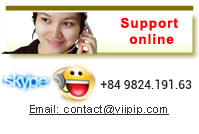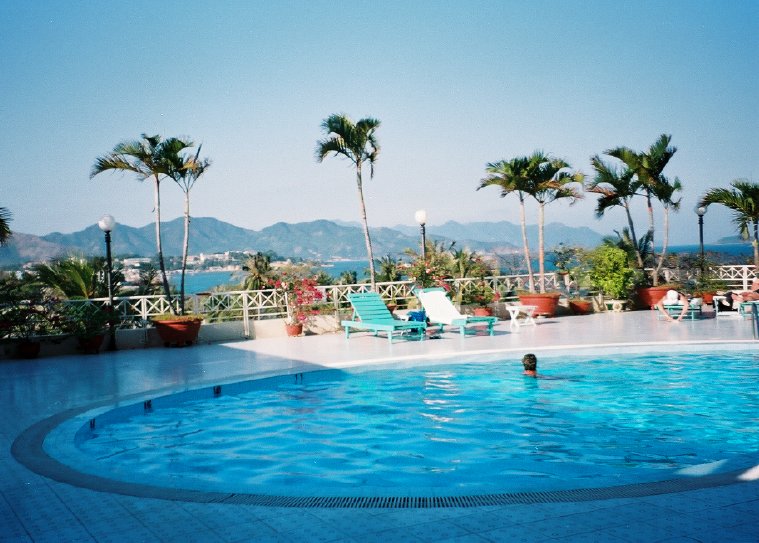With its dynamism and sharpness, Long An province has achieved many socioeconomic development achievements, confidently asserted its position in the Mekong Delta region, and contributed to the development of the whole region. The following is the interview with Long An Provincial People’s Committee Chairman Do Huu Lam. Thanh Tam reports.
Could you demonstrate Long An province’s success with specific numbers?
In the past years, the government and people of Long An province have united, shared forces, promoted brainpower and bravery to develop the province with many impressive accomplishments. The annual economic growth averaged 10.7 per cent in the 2008-2012 period and reached 9.7 per cent in the first six months of 2013. Per capita income was US$1,743 in 2012, with average annual increase of 14.2 per cent in the 2008 - 2012 period.
The economic structure continued to shift in the right direction, from the order of agriculture - industry - services to the order of industry - agriculture - services. In 2012, the Region 1 accounted for 32.5 per cent (compared with 38.8 per cent in 2008), the Region 2 made up 37.5 per cent (32.7 per cent in 2008) and the Region 3 contributed 30 per cent (28.5 per cent in 2008).
The province now has 28 large-scale industrial parks, of which 16 have gone into operation with an occupancy rate of 43.5 per cent, and 29 small-scale industrial complexes covering 3,113.25 ha, of which nine have gone into operation with an occupancy rate of 79.4 per cent.
The province’s investment attraction for social and economic development has markedly improved, particularly FDI attraction. Until now, Long An has granted investment certificates to 462 FDI projects with a total registered capital of over US$2,974 million, of which 264 projects have gone into operation. The disbursed capital reached some US$1,650 million. Export turnover grossed US$1,289 million.
The State coffers collected VND2,600 billion in the first six months of 2013, up 20 per cent year on year. Particularly in 2012, the State budget revenue was VND4,935 billion, ranking second in the Mekong Delta after Can Tho City.
Along with economic development, the province also focused on developing cultural and social fields and achieved positive changes. The education and training system is expanding in scale and the learning and teaching quality is getting higher. Classrooms and schools continue to be adjusted towards the master development plan. The province had 56 schools meeting national standards in the 2012-2013 school year, up 55.5 per cent over the 2011-2012 academic year. Cultural and spiritual life of the people is increasingly being improved, while cultural and information activities are quickly changing in content, form and quality. The province ensures social progress and justice, effectively implements social policies, and raises incomes for the people, and markedly reduces poverty (to 4.73 per cent). Employment, poverty reduction and vocational training programmes all passed their objectives.
In the five-year economic development plan from 2011 to 2015, the province defines that industrial, commercial, service and urban development zones will include districts adjacent to Ho Chi Minh City and Tan An City. So, how can the province take advantage of HCM City-adjacency and other advantages? How has the province outlined development orientations and investment attraction directions for the this economic zone?
Districts neighbouring HCM City are defined to be the province’s industrial, urban and commercial and service development zones. This is considered the growth engine of the province in the future. The province will focus on attracting investment for industrial and urban infrastructure construction. It will allocate nearly 15,000 ha of land for industrial development in 2020 from over 5,000 ha at the present.
To become a dynamic region, in the coming time, the province will focus on investing in infrastructure, especially transport, electricity, water supply and communication systems to ensure ready infrastructure for investment projects to operate effectively. The province deploys and attracts investment capital for outlined important projects like clean, high-quality industrial zone development project, warehousing centre project on Ho Chi Minh - Trung Luong Highway and Belt Road 4 of Ho Chi Minh City, and Tan An - Ben Luc urban zone development project.
In addition to reallocating resources for projects in line with the socioeconomic development master plan, the province will also renovate and improve the effectiveness of investment promotion, and contact strong domestic and foreign corporations and international organisations to draw their investment capital flows. At the same time, the province continues to review projects in the province, seek solutions to difficulties and obstacles facing investors, and speed up investment progress. The provincial authorities regularly meet with enterprises to encourage and support them to live through difficulties to expand production and business activities.
Deputy Prime Minister Hoang Trung Hai signed Decision 50/QD-TTg dated January 7, 2013 on the approval of general construction tasks for Long An Border Gate Economic Zone in Long An province till 2030. So, what are fundamental policies and measures the province takes to develop the Long An Border Gate Economic Zone into the growth engine of the western subregion of Long An province, serve as a traffic hub of Ho Chi Minh City and the Mekong Delta region, and connect the Mekong subregion nations?
To lay the foundation for the construction and development of Long An Border Gate Economic Zone, the province is completing and submitting the 13,080-ha economic zone development plan to the Prime Minister for approval in 2013. After the plan is approved, the province will invest or attract investors to invest in projects in the economic zone like trade centres, residential zones and urban zones. At present, the province is building an integrated control station in Binh Hiep International Border Gate, expected for completion in 2013.
In addition, to facilitate the development of Long An Border Gate Economic Zone, the province is requesting the Prime Minister to supplement Binh Hiep - Pray Vo International Border Gate with the road transportation agreement signed by Vietnamese and Cambodian governments and implement Vietnam - Cambodia traffic connecting projects early. The province proposes upgrading a 26-km road and a bridge from Binh Hiep Border Gate (Long An province) to Trans-Asia Road (Svay Rieng). At the same time, it also suggested the government and central agencies revise some provisions on import and export of goods to match actual situations.
To promote industrial, agricultural, commercial and service strengths and turn Long An province into a basically industrialised province by 2020, the province has launched four ground breaking programmes and nine key projects. Would you mind elaborating on these programmes and projects, as well as implementation directions for them in the future?
The four ground breaking programmes are the programme to effectively exploit and use resources and protect environmental sustainability; the programme to mobilise all resources for traffic, electricity and water system construction to serve industrial development; the programme to develop human resources, create jobs, and reduce poverty; and the programme to invest in new countryside construction and development.
Nine key projects are Long An Gifted High School; Psychiatric Hospital; Obstetrics - Paediatrics Hospital; Long An Juvenile Palace; Long An historic revolutionary relic site; Southern Party Committee and Administrative War Resistance Committee Site; Long Hau - Tan Tap Road; Thu Thua - Binh Thanh - Hoa Khanh Road; and a traffic route on Road N1 - National Road 62 - Canal 79 - Cambodian Border.
To implement the ground breaking programmes, after the Provincial Party Committee issued programme contents, the Provincial People’s Committee built action plans and assigned specific tasks for relevant departments, agencies, districts and cities to implement. Each programme is supervised by a committee led by Chairman and Vice Chairman of the Provincial People’s Committee.
As for key projects, the province will focus resources to carry out and resolve difficulties in the implementation process. So far, all projects have been commenced and some are nearing completion. All are expected to be completed by 2015.













 ADB: Vietnam’s 2009 GDP growth to be highest in South East Asia
ADB: Vietnam’s 2009 GDP growth to be highest in South East Asia MGM Grand Ho Tram: Vietnam’s First ‘Las Vegas Style’ Integrated Resort
MGM Grand Ho Tram: Vietnam’s First ‘Las Vegas Style’ Integrated Resort Nha Trang’s Twin Towers project licenced
Nha Trang’s Twin Towers project licenced Foreign investors still have good opportunities in Vietnam
Foreign investors still have good opportunities in Vietnam Sierra Wireless gets a foot in Vietnam’s ICT market
Sierra Wireless gets a foot in Vietnam’s ICT market